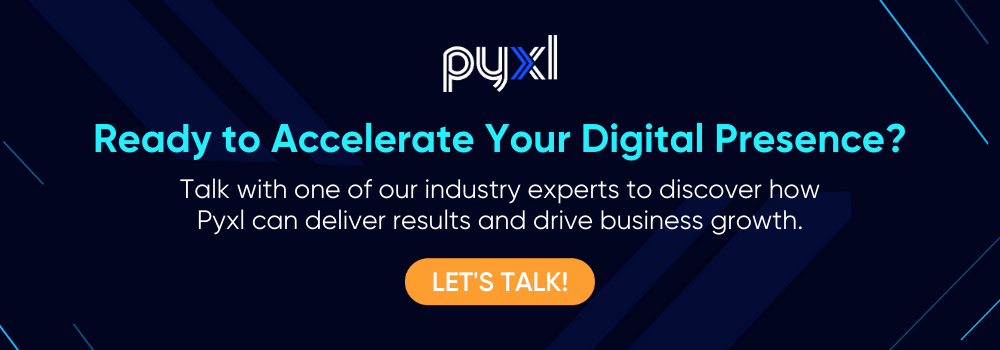When it comes to writing on a business level we often see these oh-so-common mistakes that make their way across our desks. So to all the copy proof-ers, “you mean *you’re” police, and Oxford comma enthusiasts, this one’s for you. And to all the students and professionals who may need a little grammar refresh, we’re here and happy to help. Here are a few of the most common grammar mistakes and how you can avoid them.
The 10 Common Most Grammar Mistakes:
- It vs. They
- Its vs. It’s
- They’re vs. Their vs. There
- Assure vs. Insure vs. Ensure
- Then vs. Than
- Your vs. You’re
- Affect vs. Effect
- Using Semicolons
- Title Capitalization
- En Dash vs. Em Dash
1. It vs. They
This might be the most common mistake we see. When referring to a company or organization in writing, the organization in question should always be referred to as an “it,” not a “they.” Unless, of course, you’re referring to the actual people who work there. Simply put, people are “they,” and a thing is an “it.”
Incorrect:
“Pyxl has offices in Knoxville and Nashville. They are a full-service digital marketing agency.”
Correct:
“Pxyl has offices in Knoxville and Nashville. It is a full-service digital marketing agency.”
But if you want to instead talk about Pyxl’s employees, it would look something like this:
“Pyxl’s team members work in Knoxville and Nashville. They offer full-service digital marketing services.”
*Note: The caveat is if you’re talking about multiple companies. Then, you’d refer to the group as “they.”
2. Its vs. It’s
The English language can be a bit confusing when it comes to possessives (and, frankly, most things). Confusing “it’s” and “its” is another very common mistake as a result. To clarify, “it’s” is a contraction of “it is” or “it has,” while “its” is a possessive pronoun.
Incorrect:
“Its a beautiful Monday, so Pyxl will open it’s windows and let the sunshine in!”
Correct:
“It’s a beautiful Monday, so Pyxl will open its windows and let the sunshine in!”
Note: When in doubt, say it out loud with “it’s” as either “it is” or “it has.” Does it make sense when you hear it?
3. They’re vs. Their vs. There
This is a mistake that makes us cringe, mainly due to the fact it was first taught during grade school and yet we see it happen all the time in professional writing. But who’s judging? (Answer: our comm team). If you still don’t understand the difference in terms, here they are broken down:
- They’re – Contraction of “they are.”
- Their – Shows possession and ownership.
- There – Refers to a place or the existence of something.
For example:
“They’re sitting over there with their dogs.”
Now, let’s break it down:
“They are sitting in a place with the dogs they own.“
4. Assure vs. Insure vs. Ensure
This mistake is common, tricky, and very easy to make. While these three words essentially share a similar meaning, there are very drastic differences in context. Let’s dive in:
- Assure – Something you do to a living thing (person or animal) to remove doubt or anxiety.
For example:
“I assure you that Pyxl will complete your project on time.”
- Insure – Something an insurance company does.
For example:
“State Farm insures my home.”
- Ensure – What you do to guarantee something.
For example:
“We ensure quality for every project we do.”
5. Then vs. Than
These two words could quite possibly be the most confusing words in the English language. Two very similar words with two very different meanings. But once you start getting the hang of how and when to use them, rest assured (!) it’ll start to come naturally. Let’s take a look:
- Than – Used to compare.
For example:
“Reading this blog will inform people faster than going back to school!” - Then – Used to describe time.
For example:
“First we write the blog, then we proof it for any grammar mistakes.”
6. Your vs. You’re
The difference between your and you’re is that one shows ownership and the other is a contraction.
- Your – Possessive, meaning you own something.
For example:
“What is your name?”
- You’re – Contraction of “you are.”
For example:
“You’re very fast!” Which also translates to “You are very fast!”
7. Affect vs. Effect
Affect is always a verb, while effect is generally a noun.
- Affect – (verb) Showing impact or change.
For example:
“The heat affected my garden.”
- Effect – (noun) A result of the change.
For example:
“The effect on me was immediate.“
8. Using Semicolons
As a general rule of thumb, if you are unsure how to properly use a semicolon, we recommend just not using one. However, if you’re interested in learning how to use it, we’re happy to help. The main purposes of a semicolon are to:
- Link two independent clauses that are closely related. Essentially, the semicolon is used in place of a period or conjunction.
Here’s an example:
“Some people like to use semicolons; others do not.”
- Linking lists where the list items contain commas to avoid confusion.
Here’s an example:
“Pyxl has worked with companies such as Carpathia, a provider of complex, compliant managed hosting services for government agencies and enterprises; Pilot Flying J, the largest travel center chain in the US; and the Consumer Electronics Association, the preeminent trade association promoting the growth of the consumer electronics industry.”
9. Title Capitalizations
Here are a few general rules to follow when it comes to capitalizing titles:
- Capitalize the first and last word
- Capitalize nouns (person, place, thing, ex: teacher)
- Capitalize pronouns (ex: I, you, she, it, this)
- Capitalize adjectives (word to describe something, ex: quick)
- Capitalize verbs (word to describe an action or state of being, ex: sing)
- Capitalize adverbs (a word that modifies a verb, ex: quickly)
- Capitalize subordinate conjunctions (showing the relationship of time or place ex: once, because, while)
- Lowercase articles (ex: a, an, the)
- Lowercase coordinating conjunctions (term between words of equal rank ex: and, but, or)
- Lowercase prepositions (expressing a relation to another word in the clause ex: on, after, for)
- Lowercase the “to” in an infinitive (ex: I want to go outside)
10. En Dash vs. Em Dash vs. Hyphen
In case you didn’t know, there are 3 types of “dashes” you can use in your writing. Lets take a look at the differences.
- En Dash – The en dash is longer than the hyphen, but shorter than the em dash. It is used to show a range, such as numbers, dates and time.
For example:
“0–100”
- Em Dash – The em dash is the longest “dash” and can be used to set phrases apart similar to how a comma, colon or semicolon would.
For example:
“My best friend—Rachel Smith—is also my neighbor.”
The em dash can also be used to set off quotation sources.
For example:
“‘My best friend is named Rachel.’— Sammy Jones.” - Hyphen – The shortest “dash” is used to modify two words functioning together, usually as an adjective, before the noun they’re describing.
For example:
“Don’t go down the one-way street.”
Hyphens are also used between numbers when spelled out.
For example:
“My mother is fifty-one years old.”
We hope this information alleviates some of the confusion and can provide a handy guide for your future writing. Think you might need a little more help? Pyxl has experienced writers on staff to help with content creation. We’d love to chat to learn how we can help!
Originally published March 20, 2019 updated July 27, 2020.
Updated: Aug 31, 2023
 Kati Terzinski
Kati Terzinski